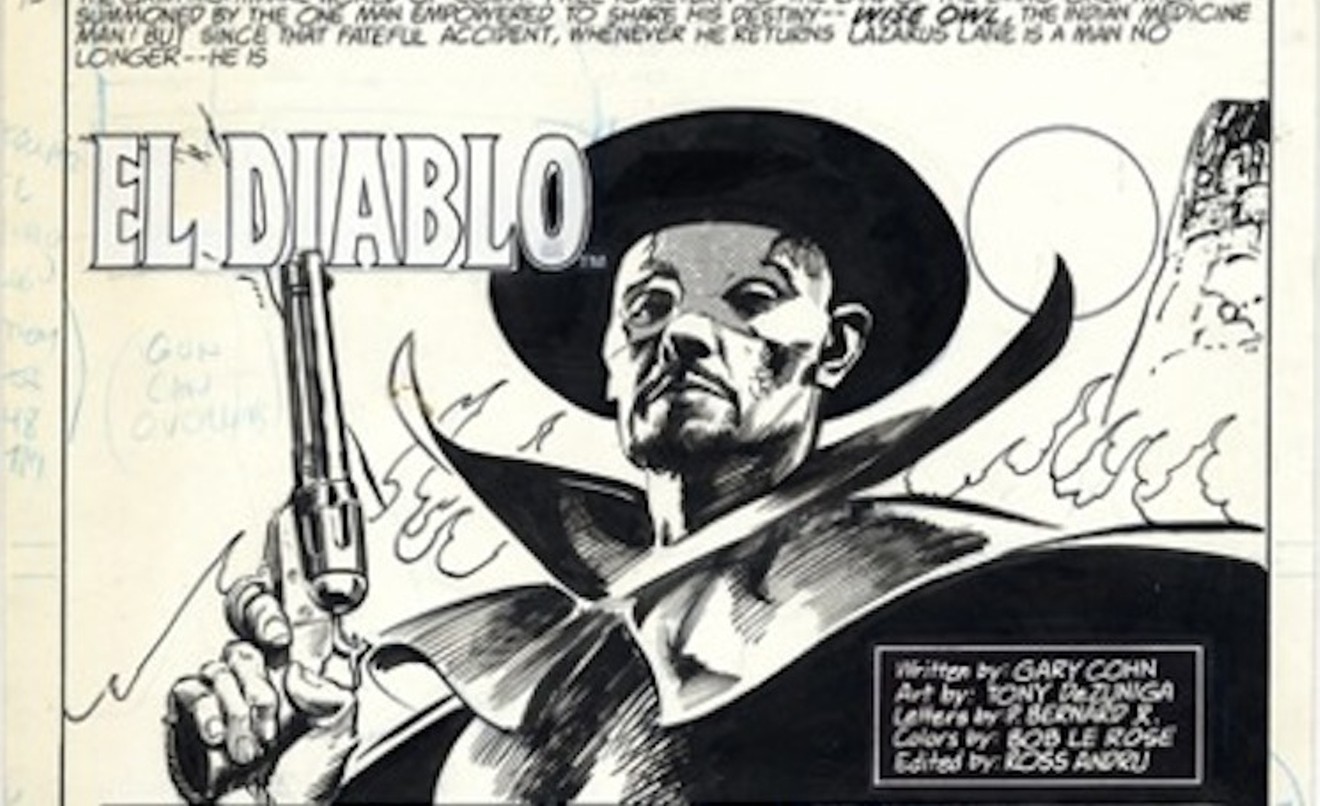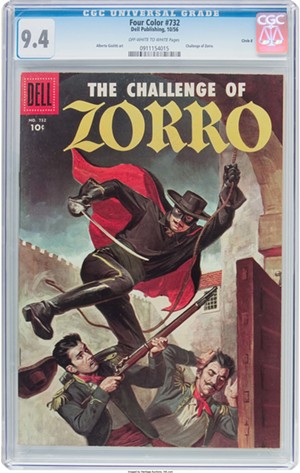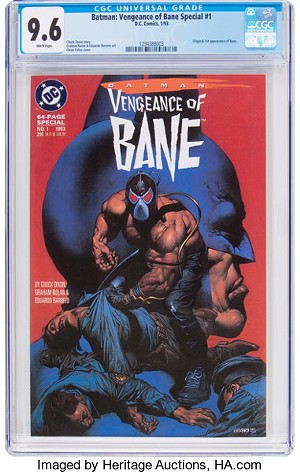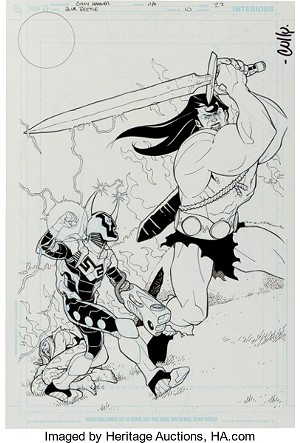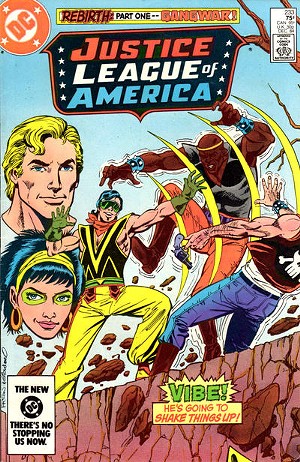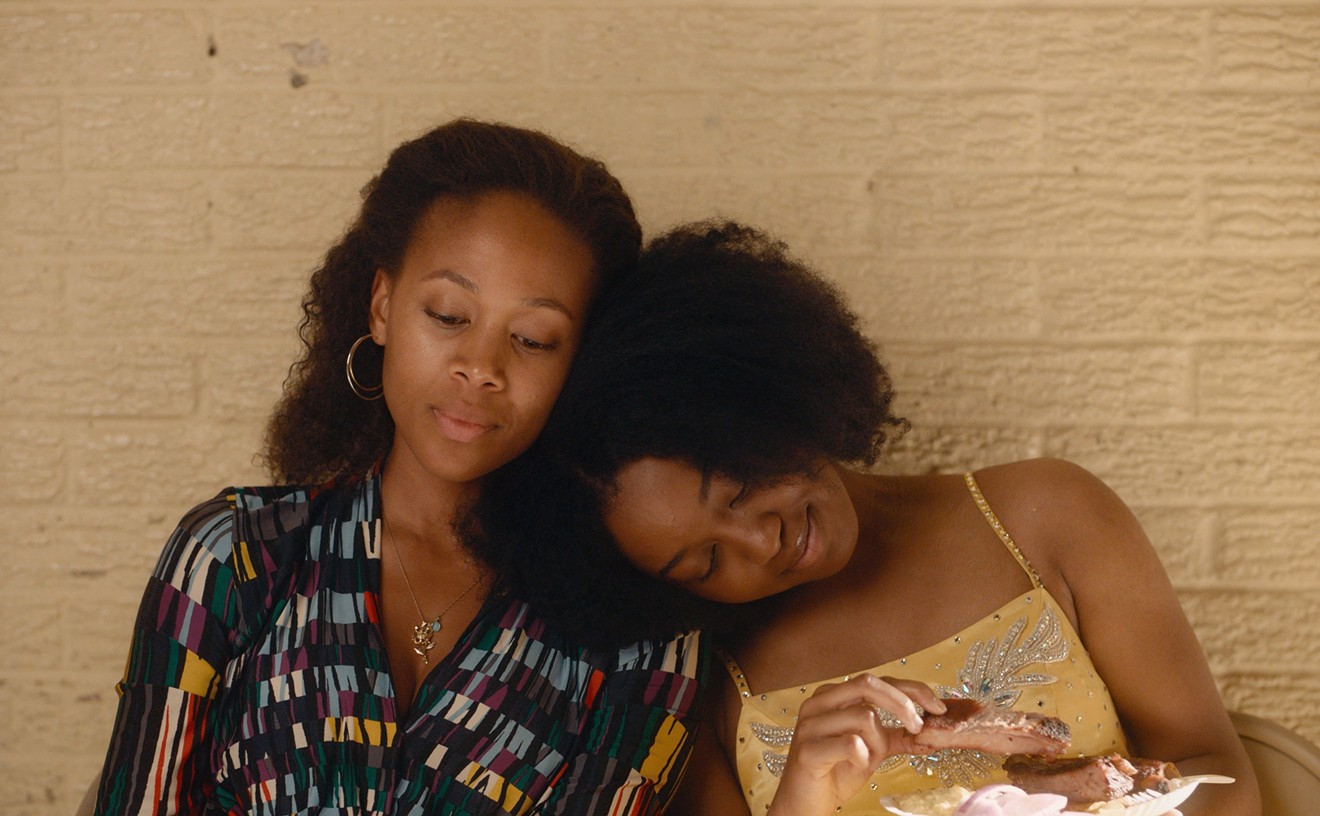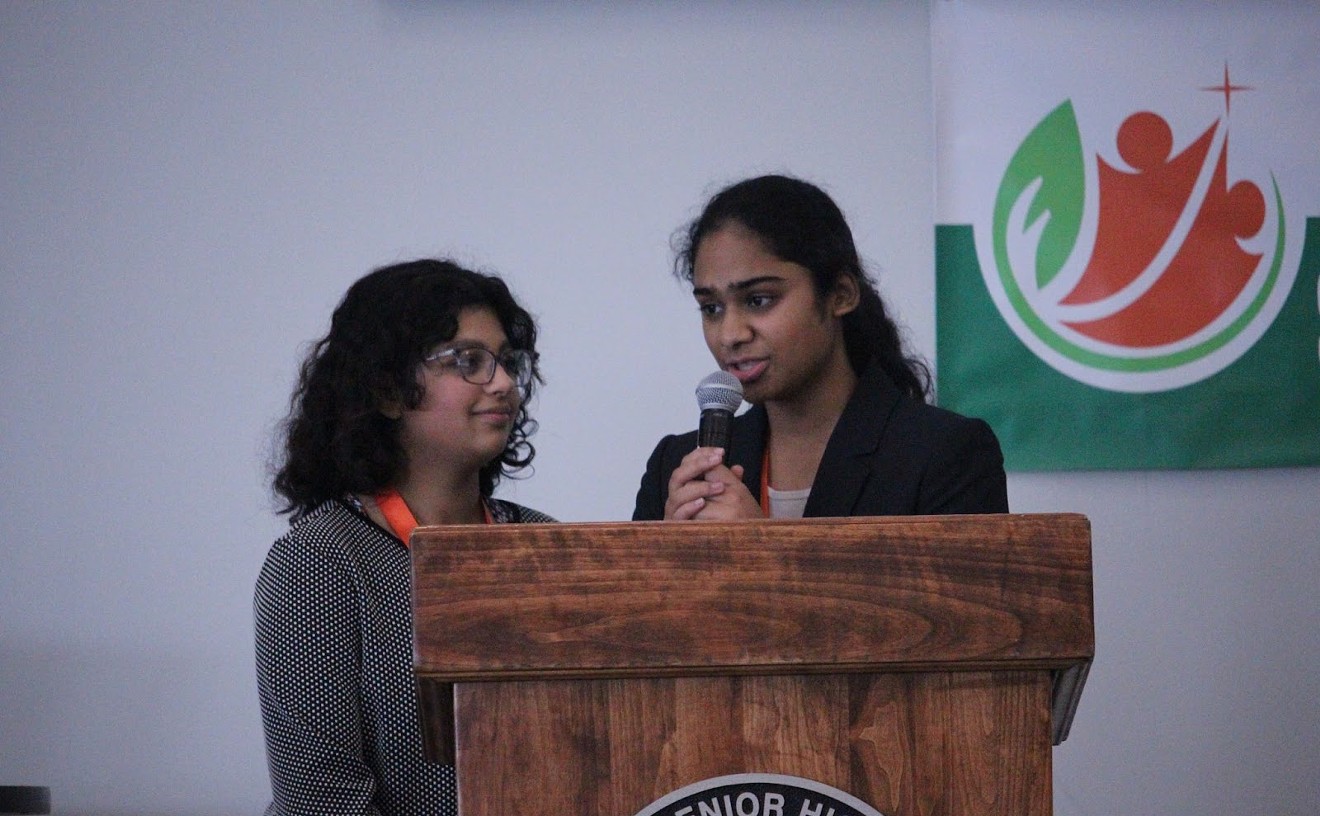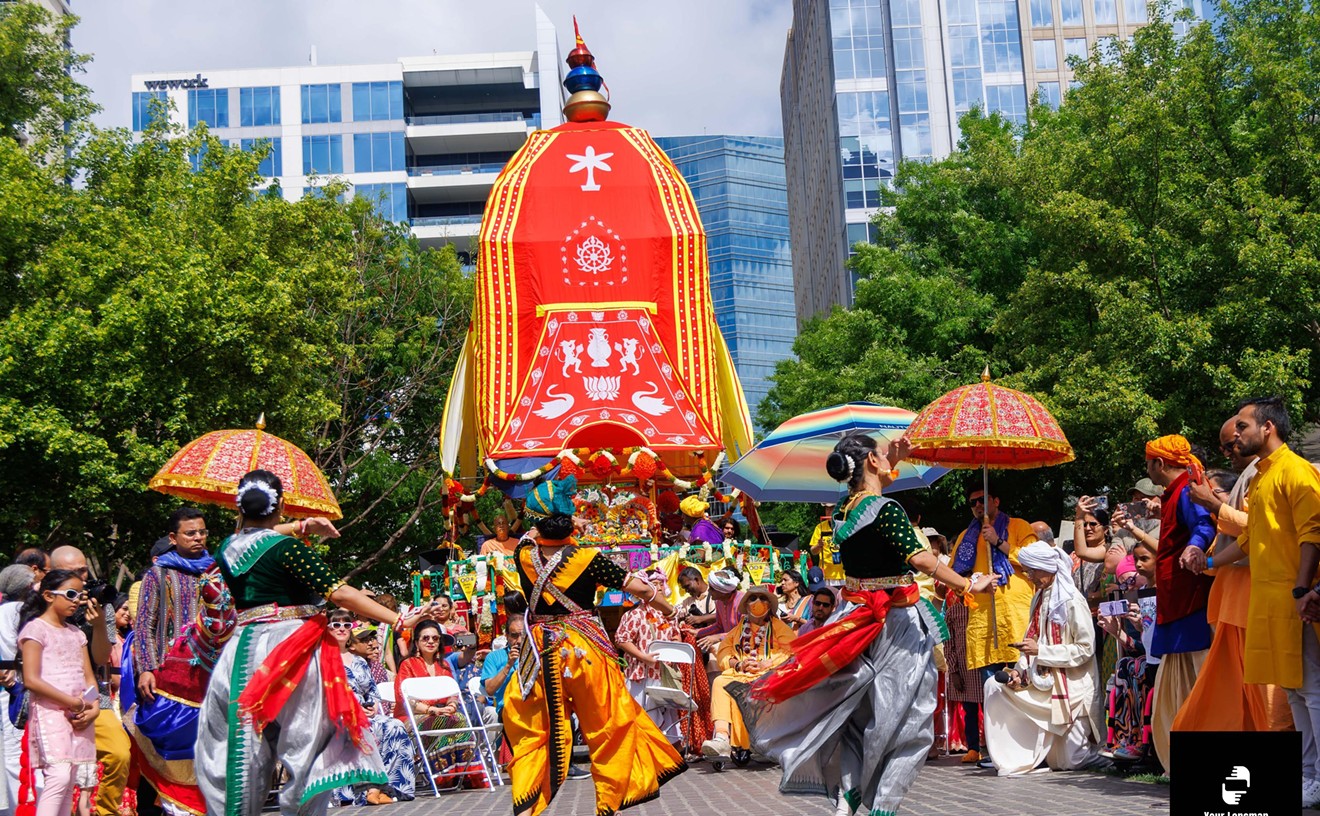"Growing up with superheroes like the Incredible Hulk, Captain America, Spider-Man,
"Marvel and DC did create those characters during the '80s, but they were always from the other side of the railroad tracks and they had to redeem themselves to do good."
Mainstream comic book publishers like Marvel and DC have added more ethnic and gender diversity in recent years to some of their most iconic comic book properties, including Spider-Man and Captain America. They've even introduced some original characters.
Here's a look at 17 Hispanic superheroes and villains throughout history.
Zorro
Writer Johnston McCulley created the masked swashbuckler who used his fencing épée to make the mark of the "Z," his calling card, in 1919 as a serialized novel character, according to the official Zorro website. Zorro was an instant hit, and McCulley followed "The Curse of Capistrano" with 65 more pulp stories.
Actor Douglas Fairbanks first brought the character to film in 1920 with the silent movie The Mark of Zorro, based on one of McCulley's stories; and Walt Disney created a television series in the late '50s, with actor Guy Williams as the title character. Actors Tyrone Power, Basil Rathbone, George Hamilton and Antonio Banderas later took on the role in other Zorro films.
Zorro made the jump to comics in 1948 in an issue of Hit Comics and later under several comics publishers, such as Marvel and Dynamite Entertainment, when the character entered the public domain. Zorro will turn 100 in 2019.
"It's still being printed and still running," says Clay Harrison, the co-organizer of the Dallas Comic Book Club and host of the "Next Issue" comics podcast on Dallas on Air. "It's gone through radio shows, TV
He's not only a classic superhero who fights for justice using his natural athletic gifts, but he's also wildly accessible even to people who have never read a Zorro comic, Harrison says.
"Everyone knows the story about the mark of Zorro," he says. "There's been some way that you've seen him."
Bane
The super-strong Batman villain that broke the Dark Knight's back more than once is one of the more interesting and well-fleshed-out villains in the history of the medium. Bane first appeared in 1993 in the DC comic Vengeance of Bane as a strongman who uses the steroid Venom to pump up his muscles, according to DC Comics' official website.
He's also a cold and calculating villain who was raised in captivity and tortured, which increased his strength and thirst for power. Bane made the first jump to film in the box office and critical bomb Batman & Robin, starring George Clooney.
Hollywood later redeemed the character with director Christopher Nolan's The Dark Knight Rises. Tom Hardy played the mysterious, masked muscleman whose ethnicity and back story are kept secret.
"He's probably one of the better developed Hispanic villains," says Heritage Auctions comic book art specialist Weldon Adams.
Blue Beetle
Teen Jaime Reyes' life and purpose change forever when an alien artifact known as the Blue Beetle scarab chooses him to become a fully armored, flying weapon.
This DC character dates back to 1964, but the most famous and beloved iteration is the self-titled first reboot issue in 2011. The Blue Beetle is a Hispanic teenager fighting the most villainous scum of the Earth while experiencing the usual problems of a teenage boy.
The character also makes appearances in animated TV series like Batman: The Brave and the Bold, the live action CW series Smallville and the fighting video game Injustice 2.
"I highly recommend him," Adams says about Blue Beetle's comics and graphic novels.
La Dama
This villain of Blue Beetle doesn't have any real superpowers, but that doesn't make her any less dangerous. This legendary and ruthless cartel leader is an urban legend to some and a very real threat to others, depending on how she views you in her careful criminal plans.
"She's handled very fairly and very well," Adams says. "One of the things that made this character interesting is no one knows who the character is, but she turns out to be another character in the book that you know. So you get to see two sides of her."
Aztek
Comic Book Resources called this warrior champion "perhaps ahead of its time."
DC Comics debuted the "Savior of All Mankind" in 1996 as a scientist endowed with Charles Atlas-like strength who protects the city of Vanity, Oregon, while waiting to fight the apocalyptic prophecy of Tezcatlipoca. The character only lasted 10 issues in his series, but he eventually joined DC's Justice League of America.
Ghost Rider (Robbie Reyes)
The flaming-skulled gas guzzler has gone through five variations that have all, thankfully, strayed very from far from Nicolas Cage's depiction of the character.
The latest version of the demonic street ripper lives in the body of high school student and auto mechanic Robbie Reyes, who is killed by mercenaries in East Los Angeles. He also now drives a flaming muscle car instead of a motorcycle and made a notable appearance in the most recent season of ABC's Agents of S.H.I.E.L.D.
"They did a wonderful job presenting the Ghost Rider character on TV," Adams says. "He's really well written and just a really good character."
Vibe
This Detroit gang member turned Justice League member, often referred to
Adams says the character started as a "pretty horrible Latino stereotype" in his DC Sampler No. 2 debut in 1984. In that issue, he was a breakdancing fool who used his fancy feet to activate mighty vibration powers. However, a revamped, more relatable version of the character appears on the CW's Flash TV series.
"Ramon Cisco is a great character on the show," Adams says. "He's smart, quick thinking, loyal to his friends and just not a stereotype."
El Aguila
This Spanish-born sword fighter one-ups Zorro's swashbuckling ability with a mutant power that lets him electrify any metallic object simply by touching it.
According to Marvel.com, Alejandro Montoya traveled to the U.S. as a street crime fighter who first worked alongside heroes like Iron
The character generously borrows from the legend of Zorro with a "costume that was very gaucho, inspired by a good-looking costume that's really stylish and really sharp," worn by a hero with a "very unique power," Adams says.
Fire
This Brazilian superhero got her start in the late 1970s on
The character has a number of unique powers ranging from fire breath to shape shifting, but her personality was clearly written by writers and designers who had never met a real Brazilian person, Adams says.
"They created a comic book based on the cartoon where they introduced the Global Guardians, so you can see how she wasn't going to be that deep of a character," Adams says. "When they brought her into the main DC Universe and the Justice League, we had more room to develop her as a real character."
Aquagirl
Aquaman may have become a punchline for people who don't read comics (he's an unimpressive superhero), but the female version of the underwater-breathing ocean protector has gone through several revamps and has a gripping back story.
The latest version of this DC character comes from San Diego resident Laurena Marquez, who develops her powers when San Diego sinks into the ocean.
"A third of the population develops the ability to breathe underwater, and the other two-thirds died in a very tragic story," Adams says. "She's just a regular, everyday kind of person who's suddenly thrust into a situation where it's not the world she's used to."
Renee Montoya
This mere mortal can't move objects with her mind or breathe fire out of her nose, but that doesn't stop the Gotham City PD detective from fighting crime.
"She was created and first appeared in the Batman animated series [in the '90s], and she got brought into the Batman comic book series," Adams says. "She's Hispanic and an extremely capable policewoman and detective. She's competent, intelligent, honest, hardworking. She's everything you look for in a character to look up to, and as an added wrinkle, she's gay."
Spider-Girl
In 2004, Marvel gave fans a new Spider-Girl in the form of a teenage girl from Brooklyn named Anya Corazon who gains her powers from a sorcerer after she's almost killed in a fight.
Her time as a spider-fighter didn't last long. She transferred her powers to another member of the Spider Society and went back into training under the Mrs. Marvel moniker.
Corazon "was a great female character, and she happened to be Latino as well," Adams says. "I really liked her and hoped she would make more appearances."
El Diablo (pictured at top)
If you saw the DC summer movie Suicide Squad, then you saw all you needed to from this fire-powered gang leader turned super villain.
The character turns villainous when his gang's secondhand man guns him down in an almost deadly power move. A trip to the spirit world earns him pyrokinetic powers that he uses on rival gangs until he accidentally kills a mother and her child, according to DC Comics. While he's being held in Belle Reve Penitentiary, he's recruited into the Suicide Squad alongside other villains such as Deadshot, Captain Boomerang and Harley Quinn.
"It's just more bad stereotypes," Harrison says. "When you have a Hispanic character in the Suicide Squad, he's got to be an L.A. gangbanger. Really? That's as far as you can go?"
Más y Menos
These fun-loving, young twins from Guatemala belong to the Teen Titans universe. They posses the power of speed, which can only be activated when they are together.
"They are riots," Adams says. "They're super-speedsters provided that they are touching each other. When they're not touching each other, they have no power whatsoever. A lot of the time, they're running around while one is on the other one's shoulders or touching fingers, and they're hysterical. They're just great characters."
White Tiger
One of Marvel's first successful attempts to create a well-rounded Latino character evolved from another entertainment trend: martial arts movies.
The martial artist first appeared in 1975 when the rise of kung fu movies and TV shows pushed comic artists to jump on the trend. Hector Ayala becomes the White Tiger when he retrieves three magical pendants from a trio of fallen fighters known as Sons of the Tiger. He later makes a legendary partnership with Spider-Man.
"He's a very street-level superhero who's out to protect his neighborhood," Adams says. "He's a very cool Hispanic character who was not as condescending as the others were with lots of bad stereotypes, bad accents and
The Ultimate Spider-Man (Miles Morales)
In 2011, Marvel announced a new Spider-Man in the form of a 16-year-old Brooklyn kid with an African-American father and a Puerto Rican mother. This followed the tragic death of Peter Parker at the hands of Green Goblin.
The news was met with a mix of praise and criticism. Radio host Glenn Beck called it a "stupid comic book" and espoused a weak theory that former first lady Michelle Obama had influenced the change. However, Morales remains part of the Marvel Ultimate universe.
"I think it shows more cultural awareness," Adams says.
Spider Man 2099 (Miguel O'Hara)
Glenn Beck is probably none too happy with Marvel's decision to put another Hispanic character in the Spider-Man suit.
In 1992, it made Earth-928 resident and Nueva York native Miguel O'Hara the new Spider-Man for the next millennium. The character was part of Marvel's failed wave of revamps in the '90s. It's one of few to survive.
"He's now canon," Harrison says. "There's a future with that character, and sometimes when they write stories, they fall off because this was all supposed to take place in 2099, and they're their own universe and they just become canon. He's also actually in a couple of video games like Edge of Time."

